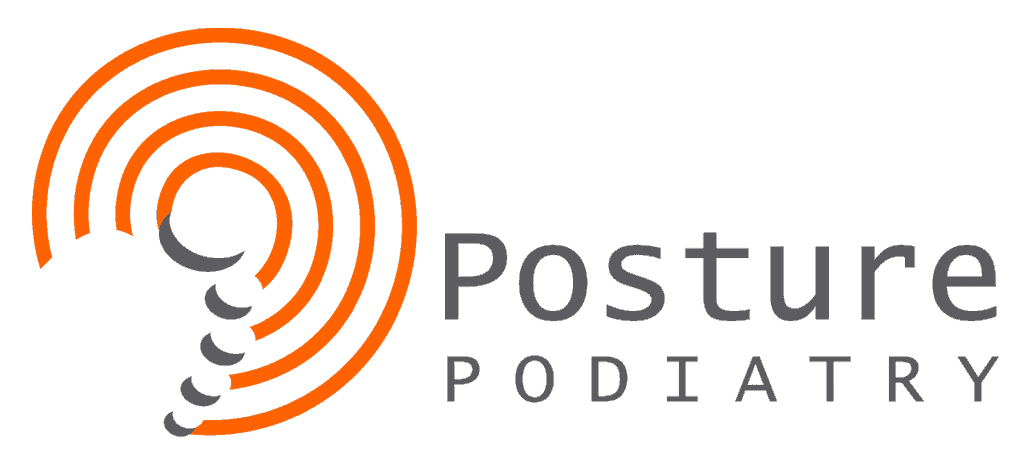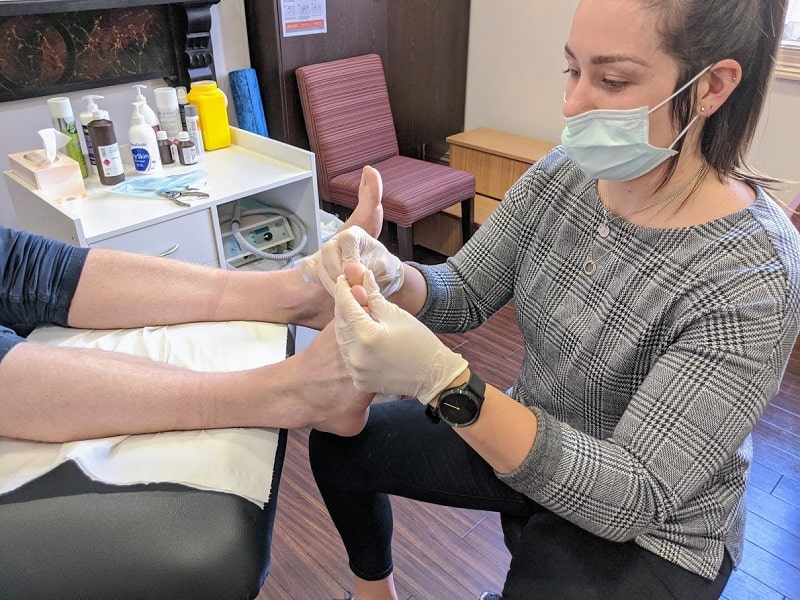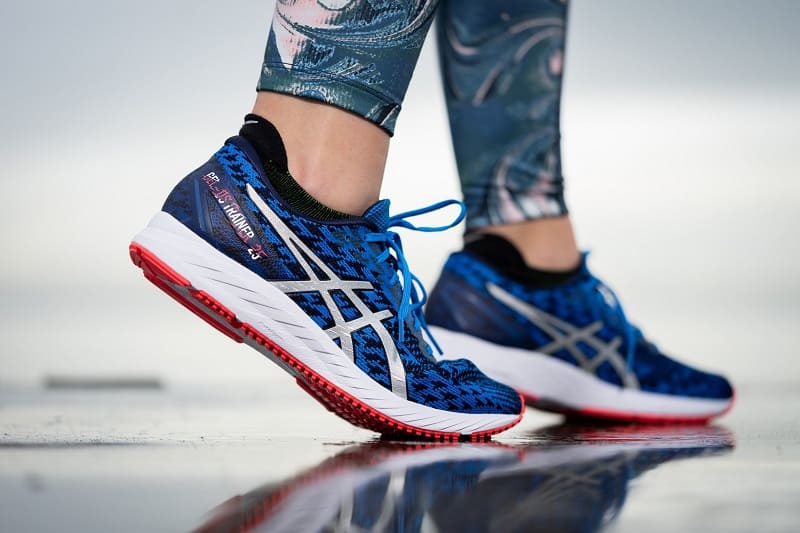What is Sesamoiditis?
Sesamoiditis is an overuse injury involving chronic inflammation of the tendons attached to the two little sesamoid bones at the base of the big toe. In the normal foot, each sesamoid bone is a pea-shaped bone located on the underside of the forefoot just back from the big toe joint. They’re located on the inside edge of the ball of the foot as marked in the image below. It’s just one cause of pain in the ball of the foot sometimes broadly termed Metatarsalgia.
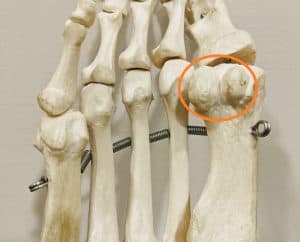
Sesamoid bones act like small pulleys and provide a smooth surface over which the tendons slide. They are similar in appearance to tiny kneecap bones. Their function and position helps to increase the ability of the tendons to move and weight-bear. Sesamoiditis of the foot simply means inflammation of the sesamoids and is normally caused by increased pressure or loading on the sesamoid bones and associated tendons.
To schedule an appointment, call us on 8362 5900 or
BOOK ONLINE by clicking here
Sesamoiditis is especially common among certain types of athletes and dancers. It’s also more common with particular foot types which display more rigid and pronounced anatomy in the region of the sesamoid bones. The condition usually stems from straining or overworking the tendons associated with these particular bones.
What does Sesamoiditis feel like and where does it hurt?
Sesamoiditis pain is often associated with a dull, longstanding pain beneath the big toe joint. The pain comes and goes, usually occurring with certain shoes and/or aggravated by specific weight bearing activities.
Pain is caused when the tendons surrounding the sesamoids become inflamed or irritated. Pain is focused beneath the big toe joint around the ball of the foot. As sesamoiditis is a chronic complaint, pain can be gradual with some swelling or bruising, however, if a sesamoid fracture is present, pain will usually be felt immediately.
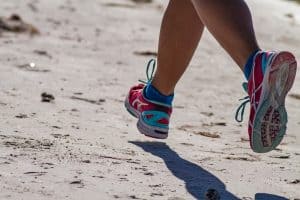
Pain is most common when bending and straightening the toe. It is then increased with higher load volumes associated with jumping, running and dancing activities.
How is Sesamoiditis diagnosed?
To diagnose a sesamoid injury, your podiatrist will need to physically examine your foot, with a particular focus in the region of the big toe joint. Your assessment will have a hands on approach where testing joint range of motion, gait analysis and footwear patterns are all important considerations.
There are a number of forefoot pathologies that can present similarly to sesamoiditis, therefore identifying the particular cause and confirming the diagnosis of sesamoid pain can be challenging. X-rays may be needed and other advanced modern imaging techniques may need to be considered.
Conditions causing similar discomfort to sesamoiditis can include turf toe and sesamoid fracture (break). Turf toe is an injury to the soft tissue surrounding the big toe joint and usually occurs when the big toe joint is extended beyond its normal range. A fracture (break) in a sesamoid bone can be caused by direct trauma or impact to the joint.
Getting the diagnosis correct is important to ensure the correct treatment is administered.
To schedule an appointment, call us on 8362 5900 or
BOOK ONLINE by clicking here
What’s the Best Sesamoiditis Treatment?
Treatment for sesamoiditis is normally non-surgical to commence with. It is important to treat conservatively and seek help from your podiatrist before surgical options are considered. Treatment will depend on the diagnosis and degree of injury and may include the following options:
- Sesamoiditis Taping & Padding – a specific sesamoiditis pad and/or strapping can be used to relieve tension or load in the forefoot
- Mobilisation – manual therapy from your podiatrist and at home exercises addressing range of motion may be needed.
- Footwear – modifications in footwear may be necessary (during sport and with day to day activity) . The best shoes for sesamoiditis will be those that help to relieve the sesamoid bones of any excessive load or impact.
- Orthotic Devices – sesamoiditis orthotics are specifically designed to reduce load on the injured sesamoids in an effort to relieve pain and promote healing.
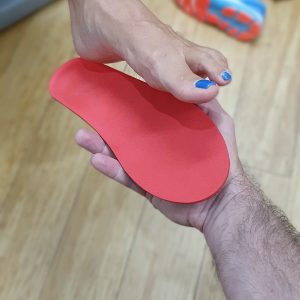
- Oral Medications, NSAIDs may be used as a temporary measure
- Steroid Injections – in some cases can be used to reduce pain and inflammation. Injections are usually done under radiological guidance to improve accuracy of needle placement.
- Immobilisation – A sesamoiditis walking boot could be required to offload the forefoot region and particularly the big toe joint if a sesamoid fracture is present.
Sesamoiditis surgery is usually only considered if other treatment methods are unsuccessful. Your podiatrist can help to explain your surgical options if required and provide guidance on referral to the best trained surgeons for this procedure.
TIPS/PREVENTION
Wear sensible, appropriate shoes, such as sneakers. They should have a wide toe box so your toes aren’t cramped.
Use your orthotics as advised, especially if you’re in a job that requires heavy lifting, crouching or other activities that put pressure on the ball of your foot.
Replace running shoes or other sneakers regularly. Wearing comfortable and cushioning footwear can help prevent sesamoiditis. Shock-absorbing sneakers are especially effective. Shoes should be replaced every 6 months, or more often if the person is very active.
Consult a podiatrist that understands the various causes and treatment options for sesamoiditis. This will help to ensure a more rapid recovery.
If you’re searching for an Adelaide Podiatrist for sesamoiditis, Posture Podiatry can help!
To schedule an appointment, call us on 8362 5900 or
BOOK ONLINE by clicking here
